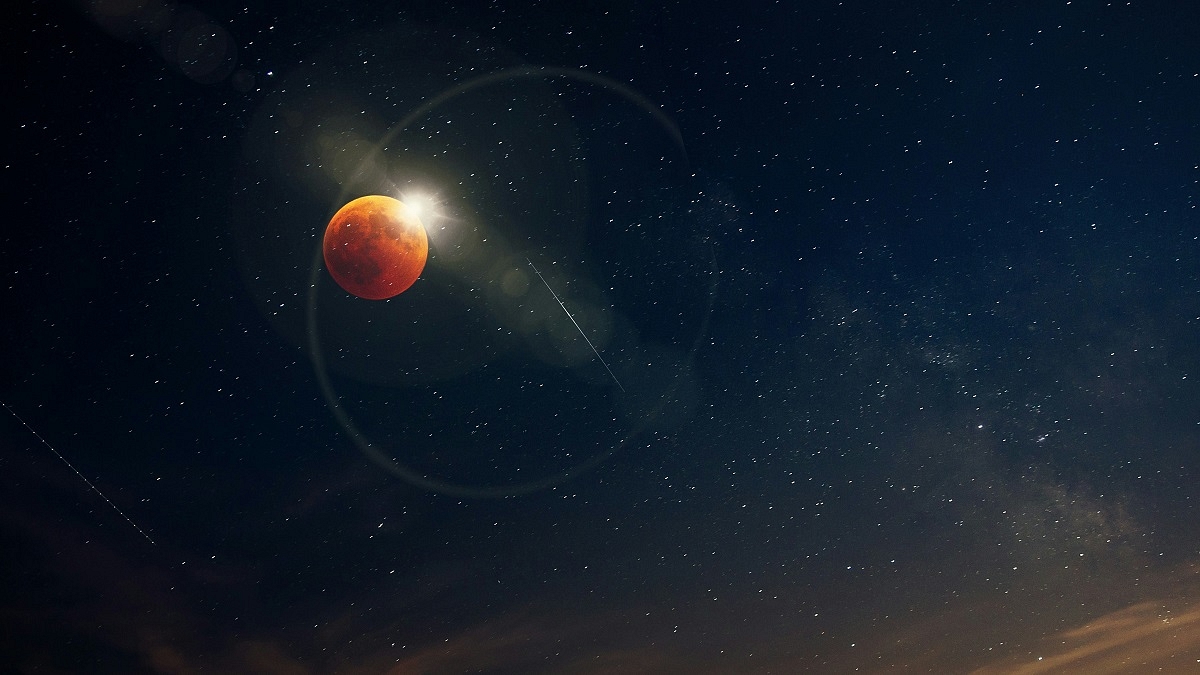Key Highlights
- Aditya L1 won’t see the eclipse; it observes the Sun constantly
- The USA is thrilled about the rare eclipse, planning special events
- Aditya L1 at Lagrange Point 1 offers uninterrupted solar study
India’s Aditya L1 satellite, stationed in space to watch the Sun all the time, won’t see today’s total solar eclipse happening over North America. The eclipse, where the Moon covers the Sun completely, is a rare event exciting people across the USA. Some are even planning special activities like skydiving and flights to view this amazing natural occurrence. Also Read | Don’t Miss Out! Total Solar Eclipse 2024: Here’s The Date, Time, Place, and All You Need To Know
USA In Eclipse Fever
For the first time in nearly a hundred years, parts of New York State will witness a total eclipse. The “path of totality,” where the Moon completely blocks the Sun, will cross several cities in the USA, creating a lot of excitement.
NASA explains that during a total solar eclipse, the Moon moves in front of the Sun, making the sky go dark like dawn or dusk. NASA is even sending special research planes to chase the eclipse’s shadow and conduct experiments. The main event, where day turns into night, will last only about four minutes.
Aditya L1’s Unique Position
Aditya L1 won’t catch the eclipse, but it’s not a mistake by the Indian Space Research Organization (ISRO). The satellite is strategically placed at a spot called Lagrange Point 1 (L1), ensuring an uninterrupted view of the Sun, 24/7, 365 days a year. This positioning was chosen by Indian scientists to avoid any eclipses blocking the view.
The Science Behind Aditya L1
Aditya L1, weighing about 1,500 kilograms, is India’s first dedicated solar observatory. It’s designed to monitor the Sun continuously, especially during active phases. The satellite, costing around Rs. 400 crores, carries special instruments like the Visible Emission Line Coronagraph (VELC), which can create an artificial solar eclipse to study the Sun effectively.
What Scientists Say
Dr. Dipankar Banerjee from the Indian Institute of Astrophysics (IIAP) says Aditya L1 provides a unique opportunity to study the Sun’s corona from space, similar to ground-based observations during a total solar eclipse. During today’s eclipse, Dr. Banerjee will conduct experiments in Dallas, Texas, and compare the data with Aditya L1’s observations.
Nigar Shaji, the Project Director for Aditya L1, reassures that the eclipse won’t affect the Sun. The satellite will continue its observations using different modes to study the Sun’s coronal structures. This collaboration between ground-based and satellite observations aims to enhance our understanding of the Sun’s behavior.
Also Read | Chandrayaan-3 Mission: Five Key Insights
Aditya L1’s Payloads
Aditya L1 carries seven payloads to study various layers of the Sun, including its photosphere, chromosphere, and corona. These payloads observe electromagnetic, particle, and magnetic field data, providing valuable insights into solar dynamics and their effects on the space environment.
Safety Note
NASA advises against looking directly at the Sun, except during the total phase of a solar eclipse, to avoid severe eye injuries. Special eye protection or solar filters for cameras, binoculars, and telescopes are necessary when observing the Sun.

